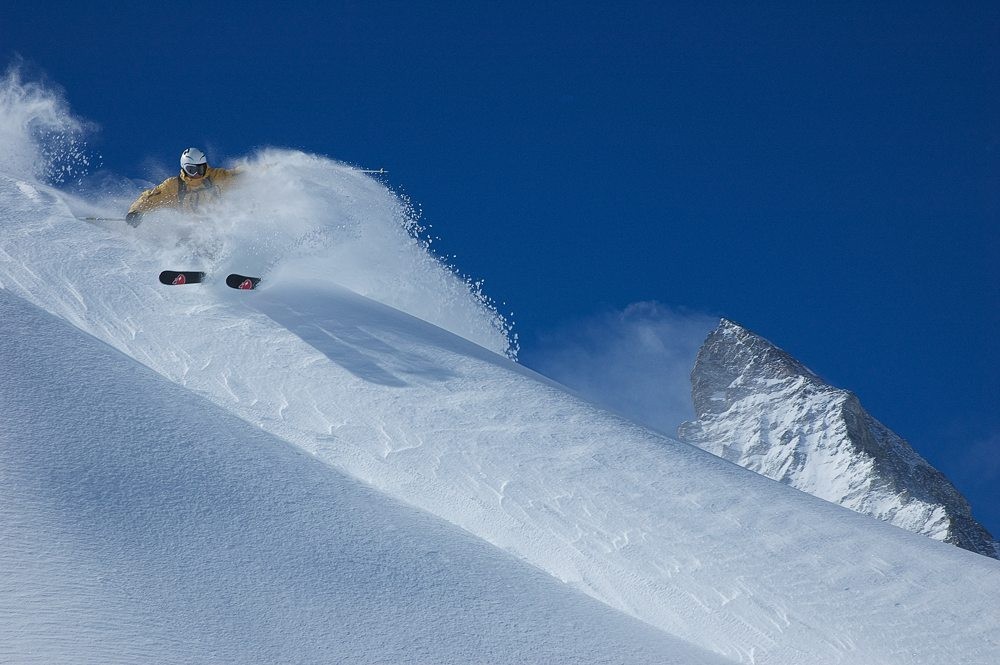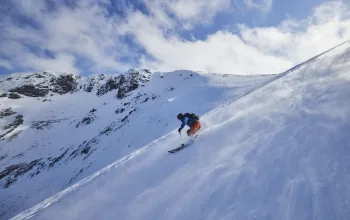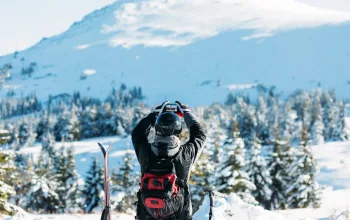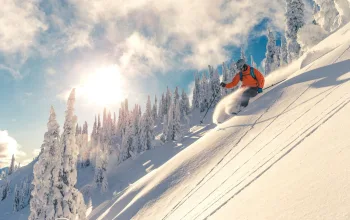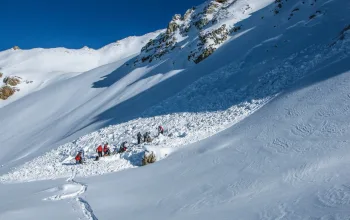With technology borrowed from snowboarding they’re easy to use and tend to float on the snow. Most modern fat skis are also rockered, which means they have a reverse camber (shaped like a banana) and turn more easily.
2. Spread your body weight across both skis
It is important to keep the outside ski weighted and active throughout the turn but it can help to focus on the inside ski. Once you feel a platform of snow under the inside foot ensure the ski is tilted as much as the outside ski and then steer it through the arc.
3. Move your centre of mass inside the line of the turn
This helps you to use the shape of the skis to steer them and make long open turns.
It feels a little like riding a bike round a fast open bend in the road. Have the confidence to let the skis run; the faster you go the more you can lean in. Get it wrong and it’s a soft landing, so go for it!
4. Let your skis do the work
When the terrain is less open, the rocker allows you to control your speed and direction by pivoting the skis, even in deep snow.
Smearing and skidding used to be ways to control things on smooth pistes but now you can use these moves in the deep stuff. Simply turn the feet across your direction of travel and see how much spray you can create.
5. Don’t lean back too much
Skiers often think they should lean back in deep snow, however too much will result in thigh burn and a loss of control. To maintain balance along the length of the skis try pushing them forward as they sink into the snow. This allows you to drive the skis rather than being taken for a ride.
6. Master your line
If you can stay balanced as the skis sink into the powder then there is no need to turn the skis too sharply across the slope. Choose a line which results in a speed at which the skis float, but they don’t run away from you. This might be slightly faster than you think!
7. Short Turns
Shorter turns in soft snow are suited to a narrower ski, like an all mountain type. Allow the skis to sink in to the snow and as they do, steer strongly from the thighs and hips. The skis will rebound out of the snow if you lift the tips of the skis at this time. The light period at the top of the rebound is the time to change edges and prepare the next turn.
8. Poles
Whatever skis you are on, use of the poles in the deep snow is essential. A strong pole plant will control the upper body and give you the confidence to let the skis keep moving through the end of a turn. It’s worth having larger baskets on your soft snow poles.
NB. Off-piste skiing should always be practiced with appropriate safety equipment and in the presence of a professionally qualified instructor or guide.
The development centre is a British Ski School in Val d’isere, Tignes and the 3 Vallees. If you’ve out-grown traditional ski school or are stuck on the intermediate plateau, their clinics and private sessions will help to move you forwards and achieve what you thought was out of reach. For more information visit www.tdcski.com


